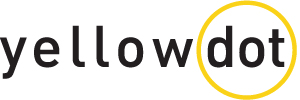If you’re not convinced yet that a buyer persona is crucial to your business, or if you haven’t yet found the time to create one, you may want to move it the top of your marketing to-do list.
Buyer personas help you identify exactly who you’re writing for so that your value proposition, pitch copy, blog content and premium offers will attract the right prospects and make them take notice.
Without personas, you’re marketing message will miss the mark and are likely to fail.
(If you’re short on time, Hubspot’s buyer persona template will streamline the process and make sure that you have all the boxes checked.)
Here are some things to keep in mind when researching and filling out your buyer persona template:
1. Look for motivations
The goal of personas is to help you write content that solves problems. Think about what your personas care about, what they need to know, and what they’re trying to do. This way your content will be relevant to your audiences, and you’ll enjoy an additional boost in client engagement and word-of-mouth traffic.
2. Social Sharing
A little bit of legwork early on will give you the foundation for promoting your content through social media and other traditional outlets. Today it’s easier than ever to share information on Twitter, Facebook and other social channels. Take advantage of this. Relevant content targeted to key audiences promotes social sharing. When one person enjoys or is engaged by what you have said, they will want to pass it on to others, many of whom will be your ideal customers.
3. Look at Your Competitors
You may not have any clientele yet, or you may have a minimal amount. Look at the blogs and social media of your competitors and determine what kinds of people are commenting and participating. This is an easy way to create a buyer persona template or even find prospective clients.
4. Utilize Social Media Profiles
If you take a good look at Facebook profiles and Twitter profiles, this can give you a good idea of who you are targeting. You will be able to find out the average age of people who are interested in what you have to offer and you can get a lot of information this way. Best of all, it’s free.
6. Follow Social Media Streams
Twitter profiles and Facebook profiles are useful but you can also see who is retweeting and sharing posts. The people who do this are usually very much involved and passionate about what they are promoting. This gives you a lot of insight into your ideal customers interests and goals.
7. Log Traffic With Quantcast
Quantcast is a free resource that will allow you to track traffic information to a certain site. You can glean a lot of demographic information for your buyer persona template. Just plug in your competitor’s information to get started.
8. Leverage LinkedIn
LinkedIn not only lets you connect with industry professionals and prospective clients, but you can also find out what your personas are interested in, their networks and connections, groups they participate in, and so on.
9. Use Quicksprout
When you enter a URL into the Quicksprout program, you will get a compiled list of the most commonly shared content for that link. If you plug in your competitor’s website, you discover their most popular content. This gives you a clue as to what people like, and you can start tailoring your own content to reflect these interests. Then promote your content and get traffic to your website or social media sites.
Key Takeaway
Creating a buyer persona template might sound overwhelming and time-consuming, but with the right tools and approach you’ll be able to conduct the research you need to fill out the buyer persona template. Once you have a clear picture of your ideal customers, you’ll move faster at attracting and engaging the right audience with your web content, blog posts, social media updates, and more. A little legwork upfront goes a long way toward securing long-term success with future marketing.

